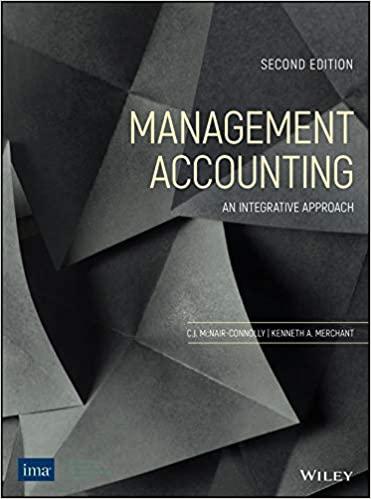Drip-No-More, Inc., makes various faucets for home use. It has a patented design feature that practically ensures
Question:
Drip-No-More, Inc., makes various faucets for home use. It has a patented design feature that practically ensures there will be no dripping from the faucet in the first 10 years of use. This patented pressure washer drives up the cost of the faucet, but is a great marketing tool.
Sara Jones, marketing vice president, wants to launch a new line of moderately priced faucets that retain the no-drip feature. The company currently does not have any other products in this market, which is growing as people turn to remodeling their existing home rather than buying a new home. Always on a budget, the home remodeler wants top of-the-line features at a moderate price. That is the sweet spot in the market Sara wants to hit.
Working with the product design team, Sara gets the first set of estimates for making the faucet using existing methods and materials:
• Target price: $150
• Target profit: 30%
• Faucet housing: $50 plus $10 in labor and $15 in overhead
• Drip-No-More pressure washer: $20 plus $5 in labor and $7.50 in overhead
• Nozzle sprayer: $25 plus $8 in labor and $12 in overhead
• Assembly : $10 in labor and $15 in overhead
The cost as currently designed is simply too high. Sara begins working with Pete, supervisor in Design, to identify ways to eliminate cost. They come up with the following ideas:
• Outsource the production of the faucet housing. The company has a supplier that can provide a similar part, though not quite as high in quality as Drip-No-More’s high-quality line. The part would cost $40. There would be no internal labor or overhead charged to the part.
• Use lesser-quality materials in the pressure washer. This would save $10 in materials.
• Outsource the nozzle sprayer to a company in Canada. It could get the sprayer for $15 and avoid the labor and overhead costs. Once again, the nozzle sprayer would not be as high in quality as the company’s existing line.
• Find new ways to do the assembly to cut down labor time for all steps across the board by 50%. Overhead would also go down by 50% if these new methods are adopted.
• Buy a new machine to make the pressure washer. The new machine would drop labor to $1 and overhead to $1.50. It could be used for all of the company’s other products. Machining costs would be $1.
REQUIRED:
a. Develop the target cost for the product.
b. Compute the current cost gap.
c. Choose among the options the design team has identified to close the cost gap.
d. Do you have any concerns about the value proposition of any of these options? In other words, could they turn customers off ?
Step by Step Answer:

Managerial Accounting An Integrative Approach
ISBN: 9780999500491
2nd Edition
Authors: C J Mcnair Connoly, Kenneth Merchant





